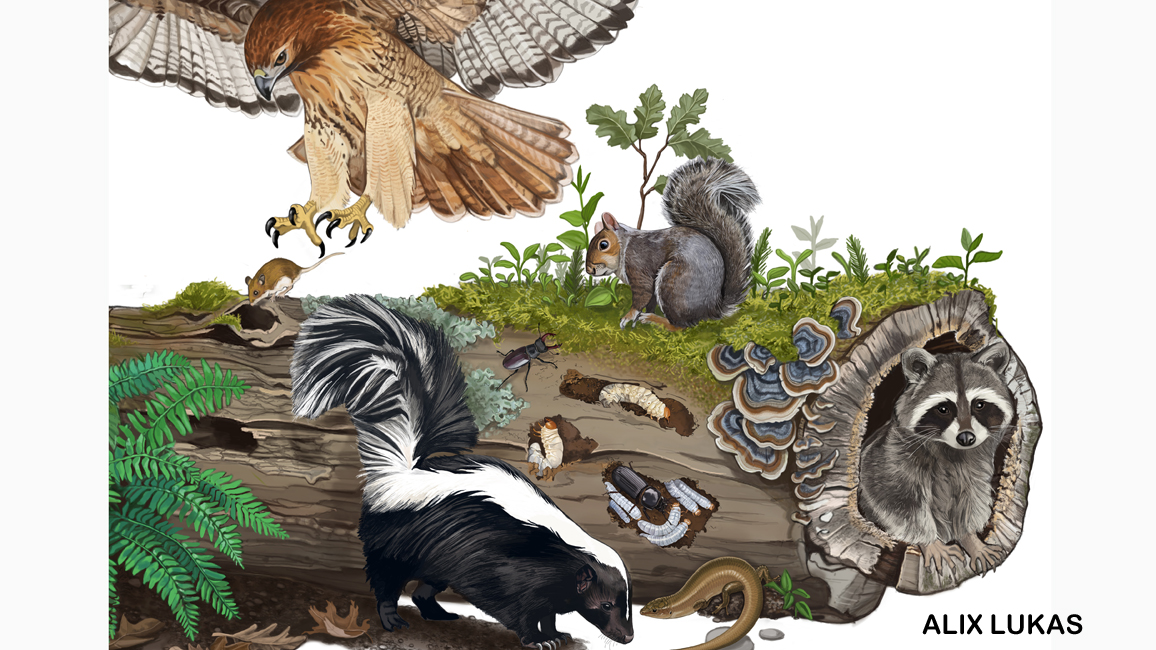
This Log Is Alive!
By Ellen Lambeth; Art by Alix LukasSooner or later, the life of every living thing comes to an end. But life itself is never-ending. Take a close look at a fallen tree, and you’ll see.

This log is what’s left of an old tree. The tree began life as a seed, spreading its roots into the ground and sprouting a stem that grew ever longer. Over the years, it grew taller, stronger, and bigger around, stretching out its thick branches.
Some birds built their nests on those branches. Insects made tunnels under the bark, while other birds pecked the wood to pick out the tasty insects. The tree also made seeds that squirrels and other animals would eat.
As the tree grew older, it began to weaken. More and more insects attacked the bark, twigs, and leaves. A bear would claw at the bark, leaving marks and its scent as a “message” for other bears in the woods.
The more the bark opened up, the easier it was for disease to get in and start to decay (rot) the wood inside. That made it become ever softer and weaker. Through the seasons, the tree was hit by rain, snow, ice—maybe even lightning.
Finally, a heavy windstorm sent the weakened tree crashing to the ground. But that’s not the end of the story! Turn the page to see what happens next.


HOW TO BE A LOG DETECTIVE
- Pack a kit that includes a journal or sketch pad, pencil, field guide, magnifying glass, and maybe a camera.
- Take a walk in the woods with family or friends. (Let an adult know where you are going.)
- When you find a log, imagine what might have caused the tree to fall, and when.
- Touch the log. Is it moist or dry, soft or hard? Knock on it. Does it sound solid or hollow?
- What do you see on, around, and under the log? Look for plants, lichens, and fungi. Also look for animals or their signs, such as empty seed shells or nut husks, fur or feathers, tracks or scat (animal poop).
- Peel back some bark to see what’s underneath. Check for holes or tunnels in the wood. If you can roll the log to check underneath, be sure to carefully move it back in place.
- Record what you find by sketching it or taking photos.
- Visit again in different seasons and in following years to look for changes.
















